Reviewed by Helen Kollias, PhD
Basics | Advice | Foods | Exercises | Psychology | Supplements | Pregnancy
Before we tell you how to lose belly fat, we’d like to say this:
There’s nothing wrong with belly fat.
In fact, in many cultures, it’s desirable to have some extra squish.
Certainly, at various points in history, luscious roundness was the look. (Google “Renoir’s bathers” or “Rubens’ nudes.”)
And yet, in modern popular culture—despite some progress celebrating more diverse body shapes—we still overwhelmingly glorify the six-pack and the itty-hourglass waist.
(Not that there’s anything wrong with those shapes either.)
Either way, many of our clients come to us wanting to lose belly fat.
Which is why we’re covering the topic.
Fair warning: This story will be different than what you usually find on the web in a magazine. That’s because we’re going to give you practical, realistic, big-picture answers.
(And those answers might not be what you expect.)
Indulge in some navel-gazing, and explore this topic with us.
Why belly fat even matters
You might’ve noticed: Regardless of body fat, people are shaped differently.
And it turns out, where we store fat matters.
Visceral fat vs. subcutaneous fat
If you sliced someone’s belly open (gross), you would find fat in two places.
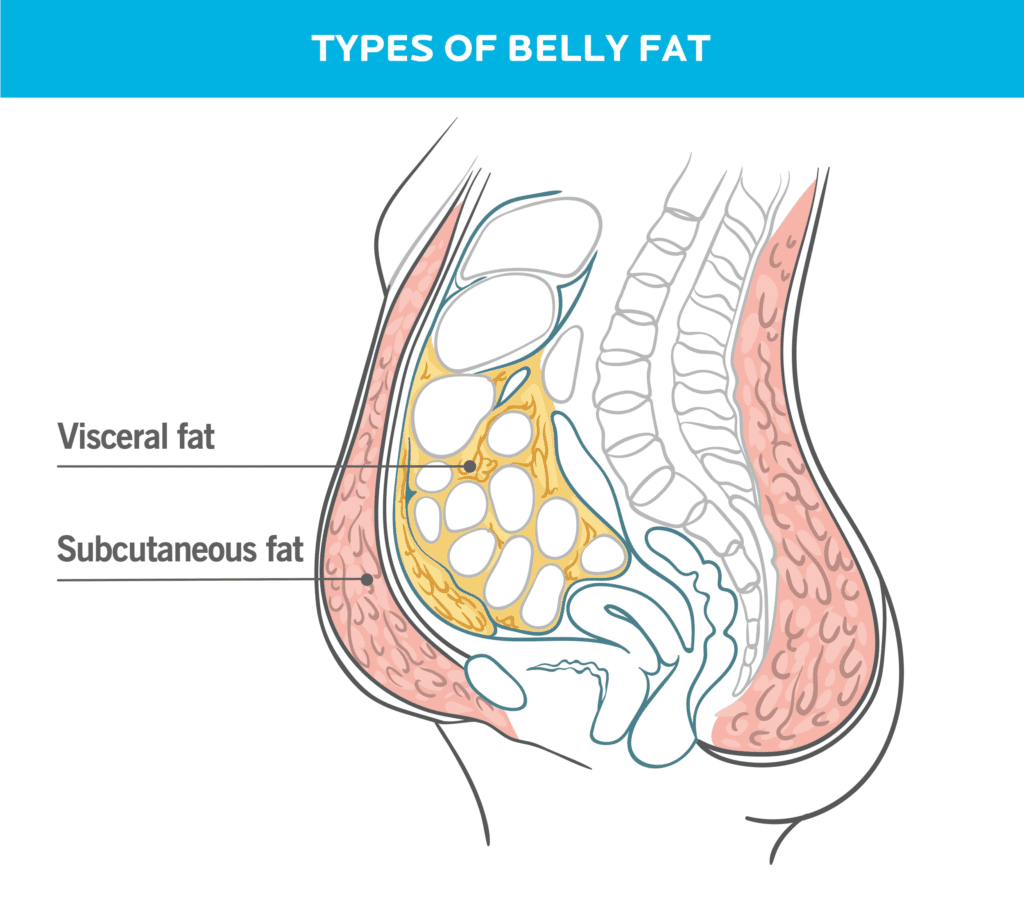
▶ The padding just under the surface of the skin: This type of fat, called either subcutaneous fat or peripheral fat, is relatively benign.1,2
▶ Deep in the abdomen, often surrounding vital organs like the liver, stomach, and intestines: Called visceral or central fat, this contributes to chronic inflammation, the formation of arterial plaque, and blood clots.3 It’s also associated with an increased risk for metabolic disorders, including type 2 diabetes and cardiovascular disease.4,5
Generally, if someone has more subcutaneous fat, they’ll also have more visceral fat—but not always. Occasionally, a person can appear quite lean, with little subcutaneous fat, but still have higher levels of visceral fat.
Okay, but why do I have belly fat?
Well, as you’ve probably heard, where we store fat relates to hormones, genetics, and certain medical conditions.
Things that can increase visceral fat include:
- A higher body fat percentage: Although genetics and hormones will determine how fat is distributed, people with more body fat are more likely to have higher amounts of belly fat.
- Being a man: Compared to premenopausal women, men are more likely to carry extra fat around their midsection. That’s because their visceral fat stores seem to absorb a greater proportion of dietary fat.6
- Being postmenopausal: Mostly due to hormonal shifts, women tend to experience a shift in body fat distribution post-menopause, with a decrease in leg fat, and an increase in abdominal fat.7
- Aging: As fat cells age, they secrete more inflammatory factors and also get redistributed from subcutaneous stores to visceral depots.8
- Having chronically high levels of cortisol: Visceral fat soaks up and breaks down excess cortisol.9
- Having certain gene variants: Several genes have been linked to body fat distribution. (If you’re into that kind of stuff, the genes are: TBX15, HOXC13, RSPO3, CPEB4, and LRP5.) While all people carry these genes, certain versions of these genes predispose a person to carry fat around their midsection, compared to their hips and legs.10,11
We can’t do anything about our age, sex, or genes. (Sorry). But we do have control over a few other things.
And we’re about to get into just that.
“Belly fat” after pregnancy: It might not be what you think it is
Immediately postpartum, women will lose about 13 pounds (bye baby, placenta, and other tissues).
After that, more weight loss may slowly occur as the uterus returns to its regular shape, and fluid levels normalize.12
Many women find, however, that their bodies, especially their bellies, look different—even if they return to their pre-pregnancy weight.
This is likely because their abdominal tissue stretched to accommodate their fetus. Now it’s fluffier, and doesn’t compress tissues and fat as well as it used to.
Lingering diastasis recti—a separation of the abdominal muscles—can also make the abdomen look more rounded.
(If diastasis is giving you problems, see a pelvic physiotherapist. They can assess the degree of diastasis, give you safe ways to move your body, potentially repair some of the abdominal separation, and improve symptoms.)
Though strengthening key core muscles (like the transverse abdominis) can help both issues, it takes time.
With so many other changes going on in your life (remember sleep?), this news can be tough to swallow.
At the same time: Your body just did a really amazing thing.
So while there’s nothing wrong with wanting to work on your body after pregnancy, make sure you approach that work with love, compassion, and a heck of a big high five.
How to lose belly fat, in 6 steps
If there’s a trick to incredible results, it’s this: the ability to practice basic (sometimes boring) health behaviors over and over again.
Wait!
Come back!
Hear us out.
What we’re about to share will probably trigger your inner “I know this already” voice. You might roll your eyes and think there’s nothing new here. Nothing “cutting edge” or “sparkly.”
But, if you use these steps, you’ll see results.
Results you can actually sustain.
And hey, that would be pretty thrilling.
1. Know why you want to change your belly.
This will help you set clear goals and stay motivated.
Maybe you’re thinking, “This is easy. I’m here because I want to lose belly fat! Step 1 is now complete!”
Easy there, partner. Let’s get specific:
- Has your doctor told you to lose weight for health reasons?
- Are you pretty healthy, but feel like your pants are getting tighter, and you just wanna know what’s up?
- Are you looking to get totally shredded, with visible abs?
Whatever your reasons, you’re welcome here.
However, if you’ve decided to slim down for your health, let’s dig a little deeper because, beyond a certain point, getting a leaner midsection isn’t healthier.
Yes, larger midsections—over 37 inches (94 cm) for men, and over 31 inches (80 cm) for women—are correlated with:13,14,15,16
- Type 2 diabetes
- Cardiovascular disease
- Dementia
- All-cause mortality
And yet, plenty of people fall well under these waistline parameters—and feel pretty fit and healthy too—but they’re unhappy with their bellies.
(By the way, plenty of people fall above these parameters and are also healthy—and happy with their shape.)
While there’s nothing wrong with wanting to change your body for aesthetic reasons, it’s worth considering:
Sometimes when we go through tough stuff—a divorce, dealing with a sick parent, a job loss—we look for other ways to feel better and more fulfilled. Like, “getting ripped.”
And getting a flat (or flatter) stomach won’t fix those problems.
In fact, sometimes getting hyper-lean creates new problems and stress.
(Learn more about the tradeoffs: The cost of getting lean.)
Because of that, lots of clients have found value in learning to accept their softer sides, rather than fight them.
Some did that through learning to view their bodies through the eyes of a loved one—such as a toddler who cuddles up to “stomachy” because it’s so squishy and comfy. Or, they’ve learned to appreciate their bodies for what they can do.
So, know your reasons for wanting to change.
And whether that change is worth the effort.
2. Accept (even if begrudgingly) that there’s no trick to spot-reducing belly fat.
We all want the easy way out of stubborn problems.
Especially when life (laundry, sick relatives, rebellious teenagers, injuries, and what’s that smell in the heating duct) feels challenging enough.
Plus, there’s no shortage of books with titles like The Belly Shrinking Diet or magazines promoting “4 Exercises to Give You Abs in 4 Weeks” to make us think that spot-reducing is not only possible, but easy.
Argh.
But just like you can’t lose fat only off your left tricep, you also can’t lose it just from your belly.
Belly fat loss goes along with overall body fat loss, which usually goes along with changes to diet and exercise.
Why are we telling you this? Because the sooner you give up on what doesn’t work, the sooner you can move on to what does.
Note: We’re excluding surgical and pharmaceutical treatments from our strategies to lose belly fat. To date, these are the only reliable methods to “spot-reduce” fat from the abdomen. Liposuction and body contouring can surgically remove fat from the belly, and hormone replacement therapy can change how fat is distributed in the body.17
Can you lose belly fat fast?
How quickly you can lose belly fat depends on how quickly you can lose fat all over your body.
To lose an inch of fat around the waist, it takes about 4-5 pounds of overall weight loss, according to our analysis of over 1000 clients.
With consistent effort, our clients generally have lost between 0.8 to 2 pounds a week.
Meaning, within a month or so of reasonably consistent healthy habit changes, people can lose up to an inch off their waists.
To learn more about how consistent you have to be to get results check out: What It REALLY Takes to Lose Fat, Get Healthy, and Change Your Body.
3. Consume a diet centered around minimally-processed foods.
While there aren’t any foods that will magically shrink your belly (celery juice, get outta here), highly-processed, highly-palatable foods can easily derail efforts to get leaner.
Why?
They’re just really easy to overeat.
(Need more convincing? Read: Manufactured Deliciousness: Why You Can’t Stop Overeating.)
Meanwhile, minimally-processed foods—like lean proteins, colorful fruits and vegetables, whole grains, legumes, nuts, and seeds—are more satisfying.
Specifically, we’ve found, in coaching more than 100,000 clients, that most people have an easier time losing fat when they consume:
- 1-2 palms of appetite-regulating protein-rich foods (chicken, yogurt, tofu, or eggs) per meal
- 1-2 fists of colorful veggies per meal, which helps fill you up on fewer calories
- Fiber-rich whole grains, fruit, legumes, nuts, and seeds in place of refined foods most of the time
Specific amounts vary from one person to another.
Now, you’re probably thinking, ‘That’s not that helpful, PN.’
You’re right, but we have a solution for that: our free nutrition calculator below. Click the ‘get started’ button, answer a few questions, and it’ll instantly give you the calories, protein, carbs, and fat you need to achieve your goals (along with a nutrition plan that shows you what to do).


© Precision Nutrition
If you want to know how to upgrade your food choices, reference this handy infographic: ‘What should I eat?!’ Our 3-step guide for choosing the best foods for your body.
Trans fats and belly fat
Trans fats, an ingredient often found in processed foods, may actually cause belly fat:
In one study, rats were fed either a high saturated fat diet, or a high trans fat diet. After eight weeks, rats on the high trans fat had significantly more visceral fat, compared to the rats of the high saturated fats diet.18
(And the only reason we don’t have a similar study in humans is because the negative health effects of trans fats are so indisputable that such a study would be unethical.19,20,21)
Trans fats are often listed as “partially hydrogenated oil” on ingredient labels, and are found in many shelf-stable baked goods, crackers, and cookies. So try to reduce or eliminate those foods.
4. Eat slowly, until satisfied.
You might assume people need a strict food tracking method to start losing fat, but we just haven’t found that to be the case.
This is especially true when they learn to listen and respond to their internal sense of hunger and fullness, a skill known as internal appetite regulation.
By relaxing, eating slowly, and tuning into their thoughts, emotions, and bodily sensations, most people can make phenomenal progress.
This is truly a ninja skill when it comes to weight management.
To learn about how this habit can transform your relationship to food—and your body, read: Slow Eating: The Challenge That Can Blow Your Mind.)
5. Find movement that you like.
You can’t burn away belly fat with abdominal exercises or vibrating waist belts.
[Shakes fist at infomercials.]
And while you might have read that high-intensity interval training (HIIT) has been shown to boost visceral fat loss,22 there’s an important caveat:
Exercise only works if you do it consistently—and long term.23
In other words, one exercise-until-you-hurl session isn’t gonna flatten your belly. Neither will two. Or three. Or seven. Or fifteen.
It takes session after session after session—week after week, month after month—to see and maintain results.
So if you love HIIT workouts more than ice cream, great. Keep it up.
On the other hand, if the idea of sprints and burpees makes you want to hide in your closet, know that you’ve got options—lots and lots and lots of options.
Ideally, to lose belly fat, you’d combine some form of resistance training with some form of cardio.
But you ultimately want to exercise in a way that’s doable, pain-free, and enjoyable—because that’s the exercise you’ll do regularly.
(Sweaty salsa, anyone?)
Can supplements reduce belly fat?
Periodically, a new supplement promises remarkable results.
But do any of them actually work?
Below we explore what the research has to say about the effectiveness of five supplements often promoted for fat loss:
| Compound | Will it help? | Findings |
|---|---|---|
| Phosphatidylserine (PS) | Not likely | PS was proposed to decrease stress, and thereby also visceral fat. However, there’s little support that PS decreases either the stress response or abdominal fat.24 |
| Conjugated linoleic acid (CLA) | Not likely | There’s no reliable evidence that CLA helps with site-specific or general weight loss.25 |
| Green tea extract | Maybe, but minimally | There is some evidence that green tea extract improves weight loss.26 However, support that it specifically targets belly fat is minimal, and only in non-lean individuals.27 |
| Caffeine | Not likely | There is moderate evidence that caffeine suppresses appetite that leads to weight loss, and increases metabolic rate temporarily. But the weight loss isn’t specific to belly fat.28,29 |
| Capsaicin | Not likely | There is some evidence the capsaicin may increase metabolic rate temporarily. However, this doesn’t translate to belly fat loss.28 |
If you just read this list and felt a big “womp woommp” of let-down, we don’t blame you.
Through clever marketing campaigns and dramatic anecdotal success stories, we’re constantly being sold on the miracle pill.
Sadly, it just doesn’t exist.
The good news:
Now that you know this, you can stop wasting your money, and empower yourself to practice the daily nutrition, movement, and lifestyle habits that do work.
6. Approach all of the above with self-compassion, instead of criticism.
Self-compassion is an attitude of generosity, honesty, and kindness towards yourself. It helps you see yourself clearly, and then take steps to help yourself.
But being nice to yourself to lose belly fat? Well, it sounds like a load of hooey, doesn’t it?
It’s not:
Research shows self-compassion is linked to healthier eating and more consistent exercise habits30,31—as well as lower rates of anxiety and depression, less perceived stress, and greater well-being overall.32,33,34
Conversely, self-criticism is linked to unhealthy eating behaviors, as well as higher rates of anxiety and depression.35,36
(Ok, fine. Not hooey.)
So what does self-compassion look like in practice?
There are three main elements:
Mindfulness: This is when you’re aware of what you’re doing, thinking, feeling and experiencing, but you’re not judging yourself for it.
Example: “I’m feeling bad about my belly. And I notice that I also feel frustrated and impatient to change…”
Common humanity: Acknowledging that you’re not alone—that everyone goes through what you’re dealing with at some point.
Example: “That’s okay. So many people struggle with aspects of their appearance.”
Self-kindness: Being generous and decent to yourself.
Example: “Take a deep breath. This body has carried me through a lot. Maybe I can do something small to care for it right now.”
(For more compassionate strategies, read: “How can I cope RIGHT NOW?”)
Welcome to the journey
We just told you about six ways to reduce belly fat.
But they’re just the start.
A healthy body is the result of many habits that support all dimensions of your life. It includes your relationships, your mental well-being, your emotional health, your surroundings, and your spiritual life. At Precision Nutrition, we call this deep health. It’s a whole-person approach that addresses all of the dimensions of life—and not just the physical.
(To learn more about deep health, read: The deep health coaching secret that transforms short-term fitness goals into life-changing results.)
You don’t want to have ripped abs but feel awful inside, right? That’s why your deep health journey might lead you to change your environment, explore your values and your identity, and line up lots of support from family, friends, medical practitioners, and maybe a coach (if you have access to that kind of service).
Finally, know that there are some things about your body that you may not be able to change (thanks aging, hormonal changes, and other life adventures).
So, while we encourage you to pursue your best body and life with all the zest you have… well, we’ll still like you if you decide not to change at all.
References
Click here to view the information sources referenced in this article.
If you’re a coach, or you want to be…
You can help people build sustainable nutrition and lifestyle habits that will significantly improve their physical and mental health—while you make a great living doing what you love. We'll show you how.
If you’d like to learn more, consider the PN Level 1 Nutrition Coaching Certification. (You can enroll now at a big discount.)


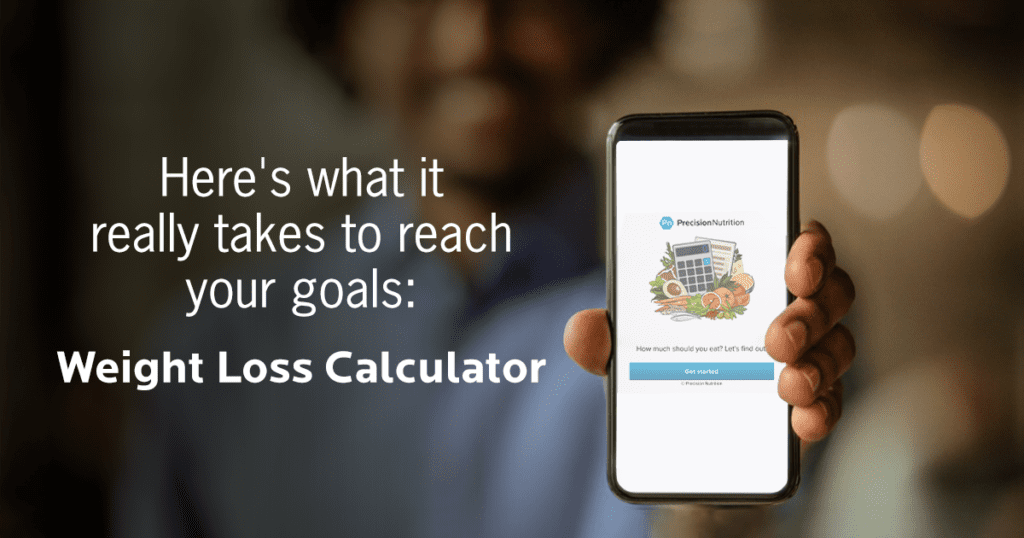
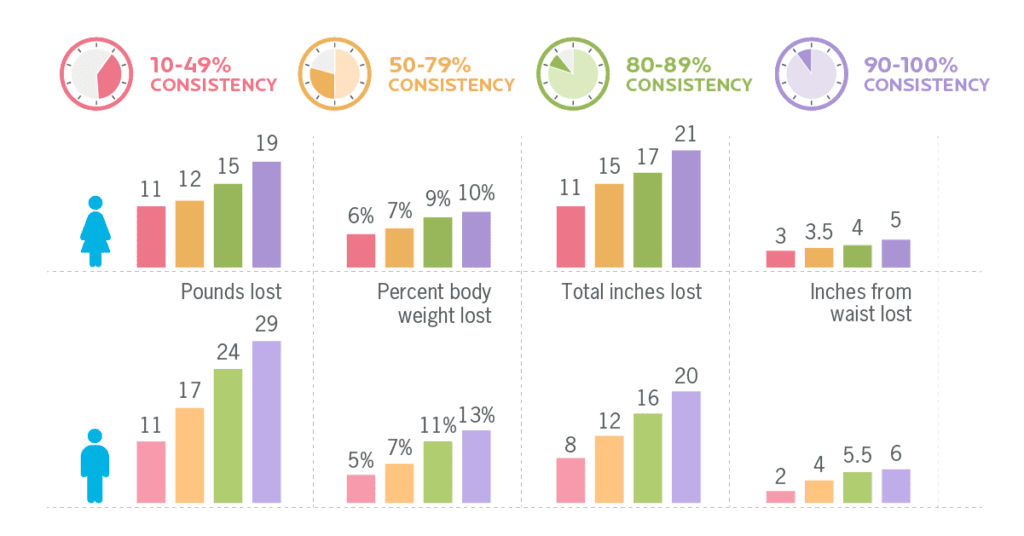

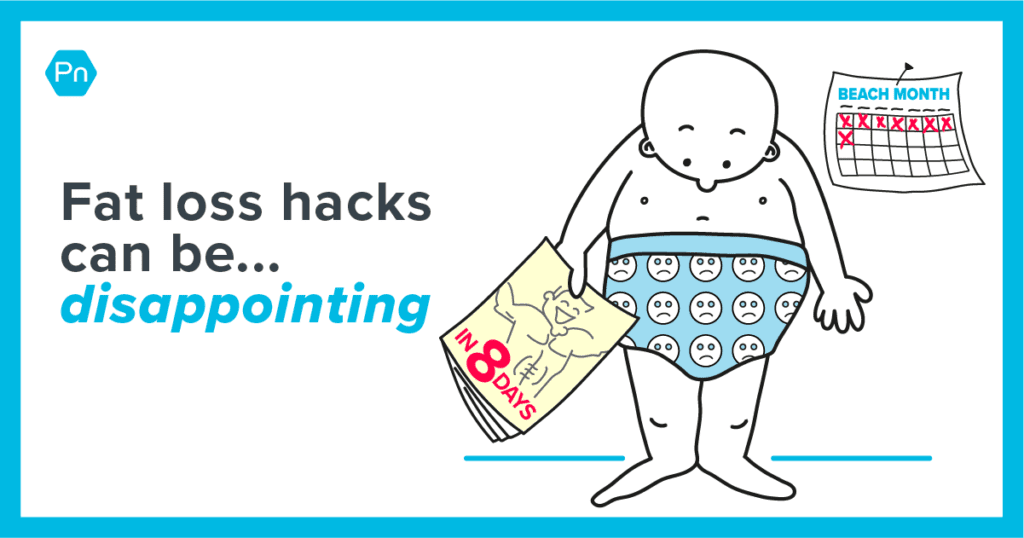


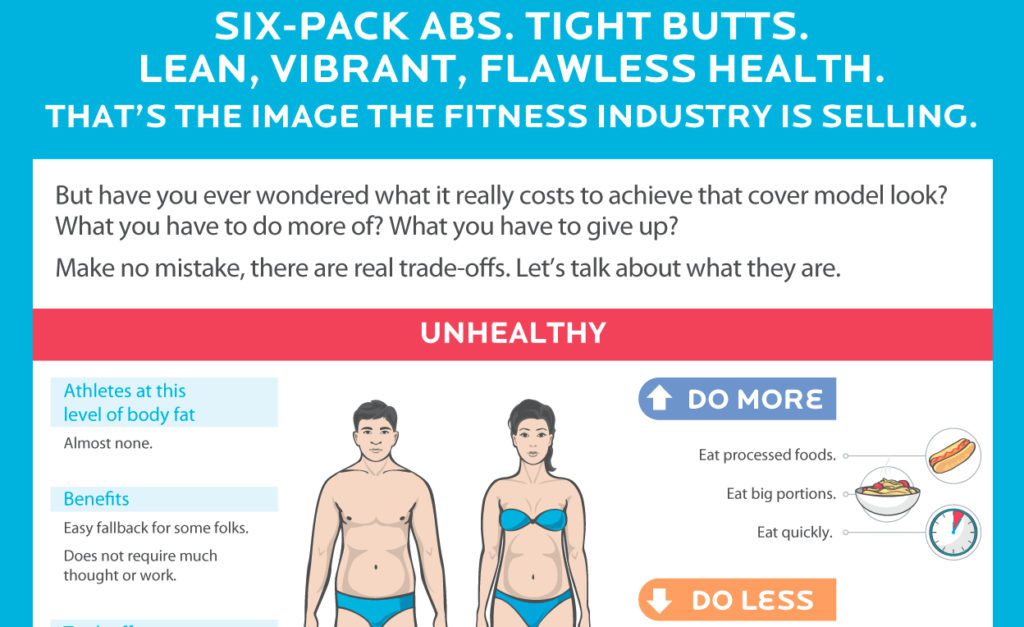
Share